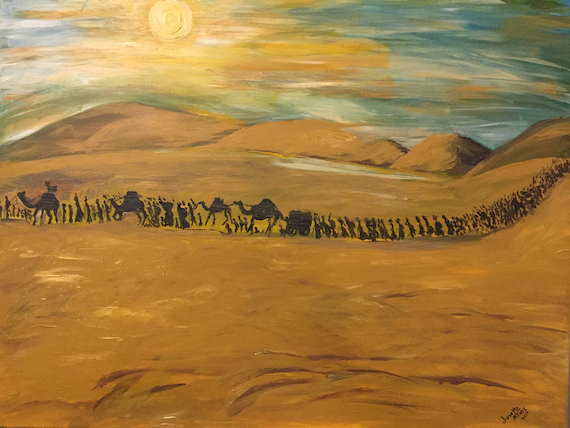Solomon and his Temple
Solomon had been King of Israel for four years when he began his plans to build a House of God. A Temple in the city of Jerusalem.
He sent hundreds of men to the hills to dig out stone from the quarries, and to cut it to exactly the right size and shape for the foundations.
Solomon wanted cedar wood to line the walls of the Temple. The best cedar trees grew to the north, where the land was ruled by King Hiram of Tyre.
King Solomon made a treaty with King Hiram. Hiram agreed to have the trees felled and floated in rafts down the coast to the Temple. In return, Solomon agreed to send huge amounts of wheat and oil to Hiram every year.
Thousands of men worked on the Temple. There were two rooms. The inside room was square with no windows.
Two huge beasts, carved of olive wood and covered with gold, stretched out their wings over it. This was the most holy part of the Temple. Only the high priest went into it on one day of the year. This was at the time of the special feast, known as the Day of Atonement.
In the outer room was an altar and ten lamp stands. The walls were lined with cedar wood. and carved with flowers, trees, and creatures with wings.
Everything, including the wooden floor, was covered with gold. At the entrance to the Temple were two bronze pillars.
And on the backs of twelve bronze oxen was a huge basin. Outside the Temple were courtyards where the people could come to say their prayers to God.
After seven years, the Temple was finished at last. Solomon had made it as beautiful as he could. And he filled it with treasure.
He called all the priests and the people to a great and very solemn ceremony. The priests put the Ark of the Covenant into the sacred inner room, and the presence of God filled the whole Temple.
Outside, King Solomon stood in front of the people, and prayed to God. "Oh Lord God of Israel, there is no other God like You, who loves His people and keeps His promises to them.
Watch over Your Temple, hear the prayers of Your people, forgive them when they do wrong. And help those who love You and obey You.
Then Solomon turned to the people and said; 'May God always be with us. May we always be true to Him, and obey his commands.
When the ceremony was over. King Solomon gave a great feast for the people, which lasted for seven days.
Then he blessed them, and they went home, happy and grateful for all that God had done for the people of Israel.










Comments
Post a Comment